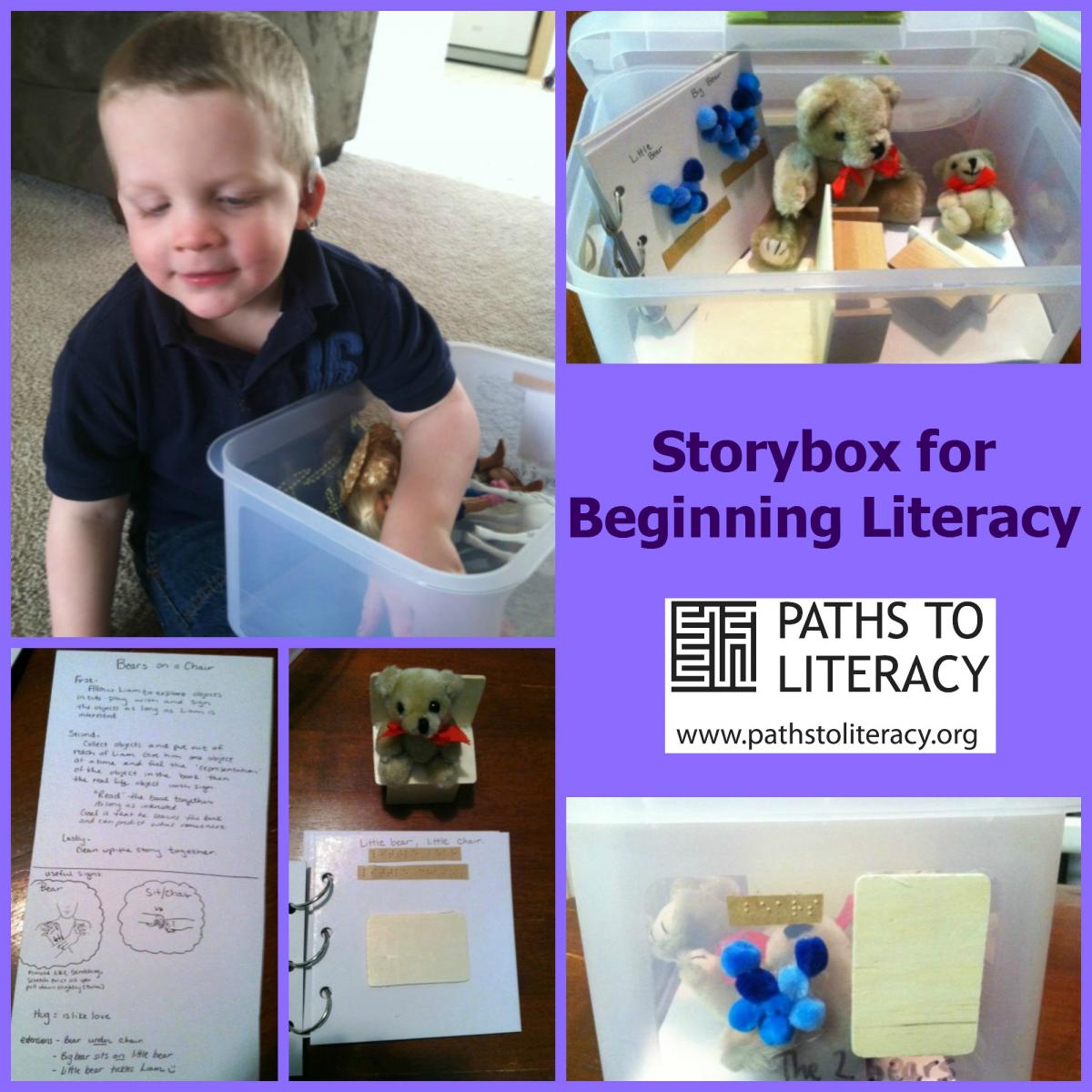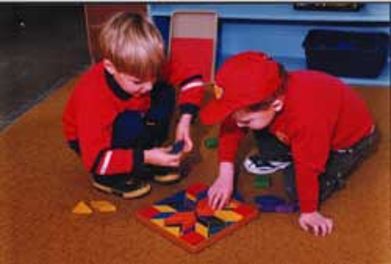I adapted Goldilocks and the Three Bears for my 4-year-old son who is deaf-blind.
2 Bears:
I wanted to create a story box for my son that was based off of a classic children’s story. My son is beginning to learn ASL. I chose the story Goldilocks and the Three Bears, and I simplified it so that I could tell the story in a way my son Liam could understand and then also eventually retell and read on his own. I created a book called The Two Bears. Two seemed like a good place to begin, so that he could compare “big” and “little” more easily.
Target ASL vocabulary words:
bear, little, big, chair, sit, happy
Materials
Story box contents:
- Story with tactile illustrations and braille
- Little bear, big bear (from Hobby Lobby)
- Little chair, big chair (I just glued pre cut pieces of wood together to make chairs)
- Instruction sheet to help foster consistency when different people are reading with Liam.
- Braille label and tactile label for the front of the box.
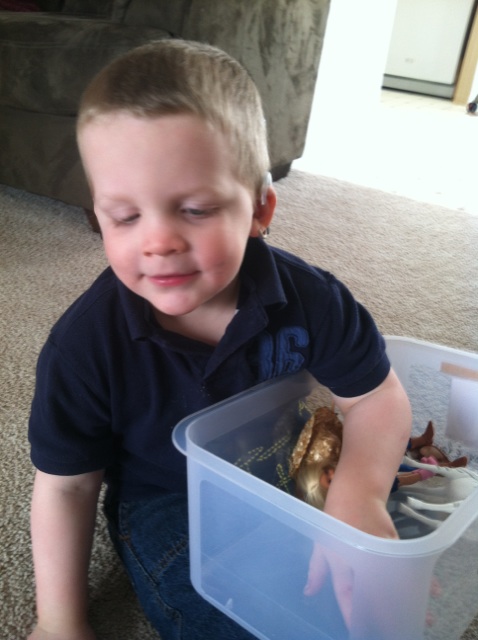
Procedure
Ideas on how to use this story box: (I am sure there are many ways that work well to use a story box, but this is what works best for my son and me.)
- Day one: I allow Liam to explore the outside of the story box first and then I teach him the sign ‘story box’. I allow him to ‘free play’ with the items in the story box and ‘read’ the book on his own. I may teach him the sign of a few of the items if he seems interested.
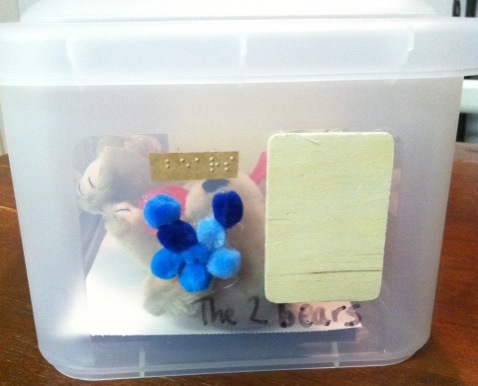
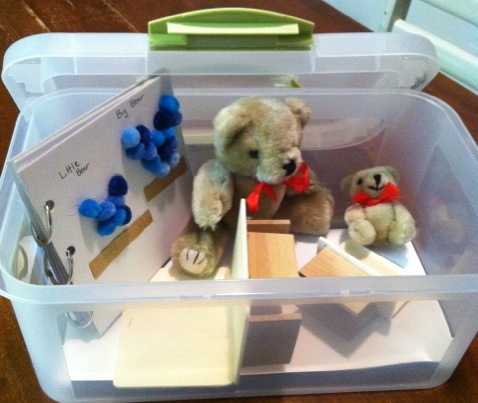
- Day two: Again, I allow Liam to explore the outside of the box first, sign story box, and then explore the items inside. I then teach the sign for ‘more’ of the items. I may then show the first page of the book and have him feel the tactile picture for bear and then feel the real bear. I will also then have him sign bear.
(Repeat this the next few times you explore the story box.)
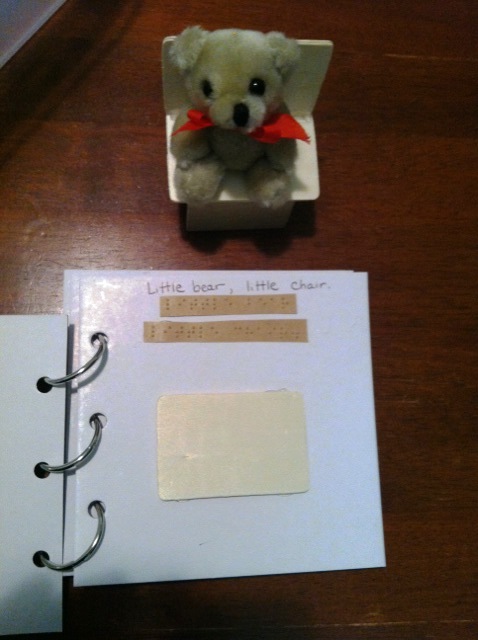
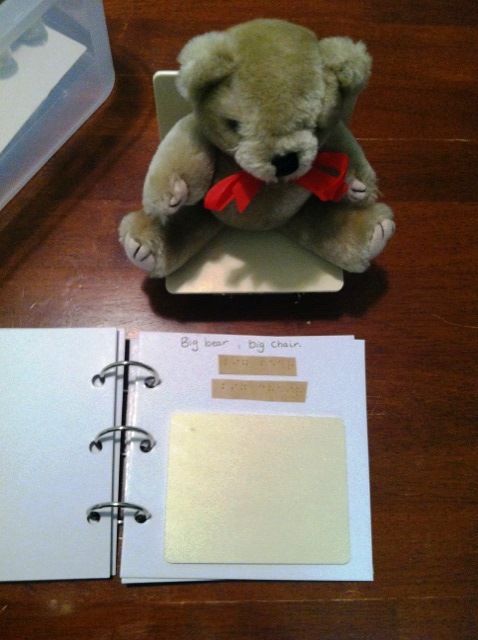
- When he is ready: when I feel Liam is ready, I then act out every page of the story. I allow him to feel the first page, find the correct objects and sign/act out what is on the page. I continue with the rest of the pages.
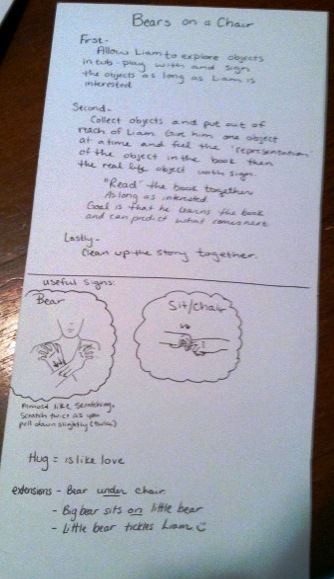
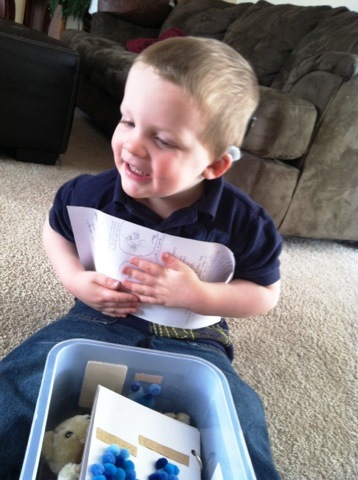
Extension:
- Eventually, I would like Liam to be able to retell the story or read the book on his own.
- I could ask Liam to find a certain object in the box and have him give it to me.
